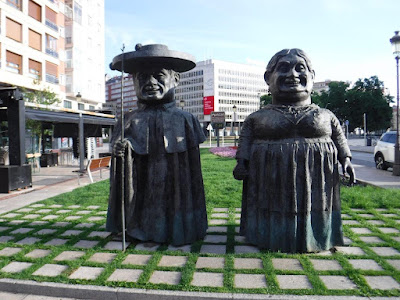The Monastery of Santa María la Real de Las Huelgas, often simply referred to as Las Huelgas, is a Cistercian convent and royal monastery. It is one of the most historically and culturally significant monastic complexes in the country.
It was founded in 1187 by King Alfonso VIII and Queen Eleanor of England as a Cistercian convent, following the Cistercian principles of simplicity and self-sufficiency, but it had a unique status as a royal foundation, answering directly to the Crown rather than the local ecclesiastical authorities.
Las Huelgas held a special place in Spanish royal history. It became a place for royal burials, and it was the site of numerous royal ceremonies and events, making it a significant center of power and religiosity.
The architecture of the monastery reflects both Cistercian austerity and the grandeur associated with royal foundations. The complex features a Gothic style with beautiful cloisters, chapels, and a church that is considered a masterpiece of Spanish Gothic architecture.
Las Huelgas is known for its rich artistic and historical heritage. Inside the church, there are numerous royal tombs, including those of Alfonso VIII and Eleanor of England. The tombs are often adorned with exquisite alabaster sculptures and carvings.
Photography inside the rooms of Monastery is prohibited. Here are some of the photos of exterior and it's courtyard.
The Iglesia de San Esteban, Museo del Retablo, or the Church of Saint Stephen holds remarkable collection of retablos, which are intricately carved and painted altarpieces, showcasing the artistry and craftsmanship of the region. The Church of San Esteban has a long history dating back to the 13th century. It's a classic example of Gothic architecture and is known for its beautiful stained glass windows and stunning vaulted ceilings.
The main highlight of the church is its collection of retablos. Retablos are ornate, multi-tiered altarpieces that are common in Spanish and Latin American churches. These retablos are adorned with intricate carvings and detailed paintings, often depicting religious scenes. Within the Church of San Esteban, there is a designated museum space, often referred to as the Museo del Retablo. This space is where many of the retablos are on display.








































































